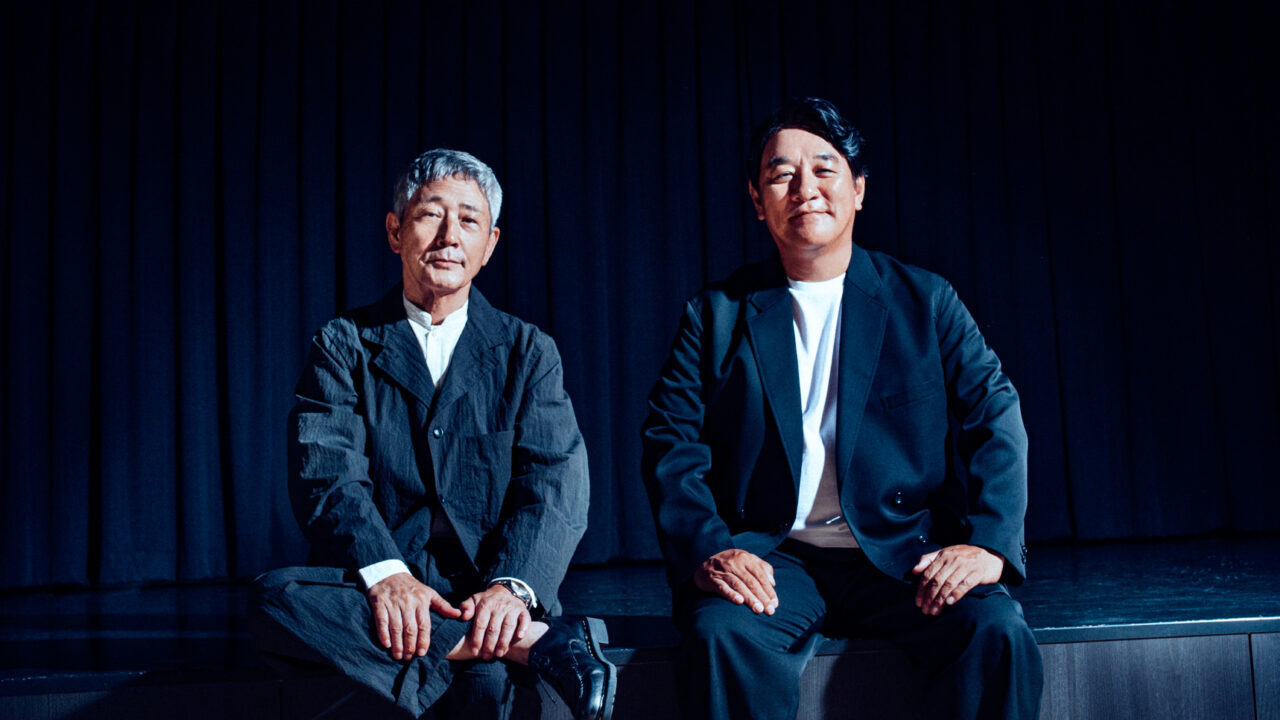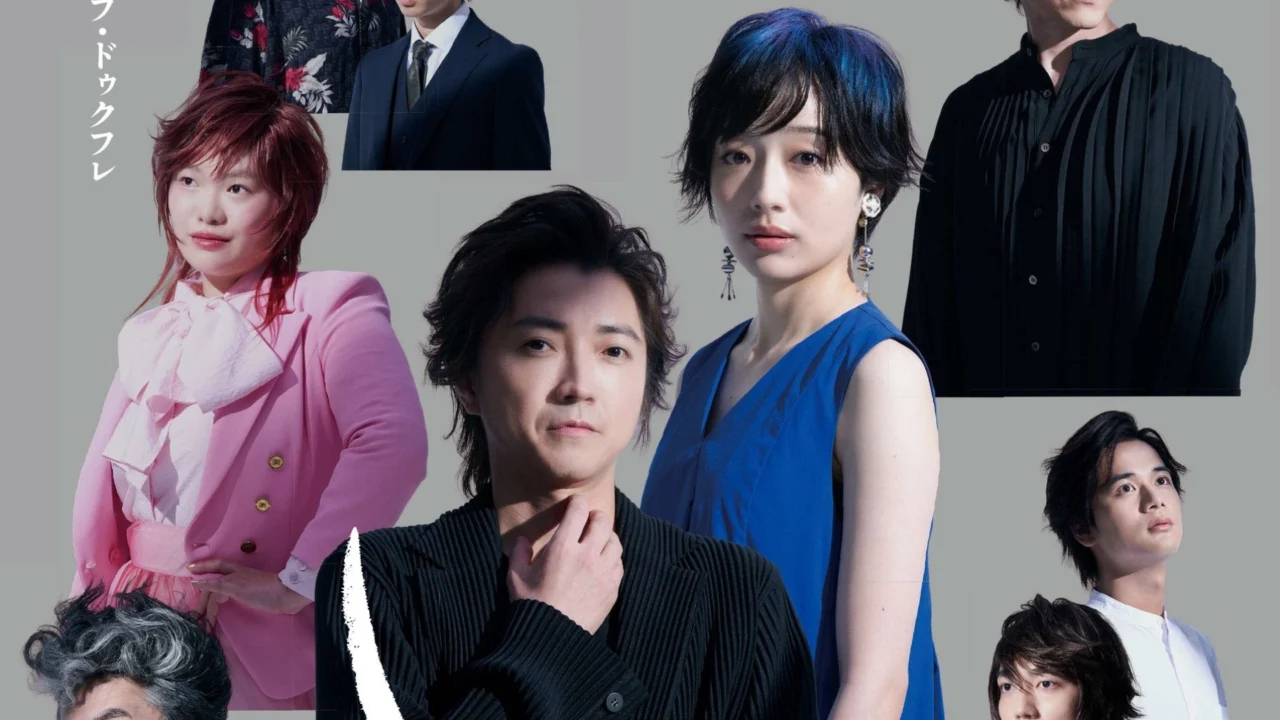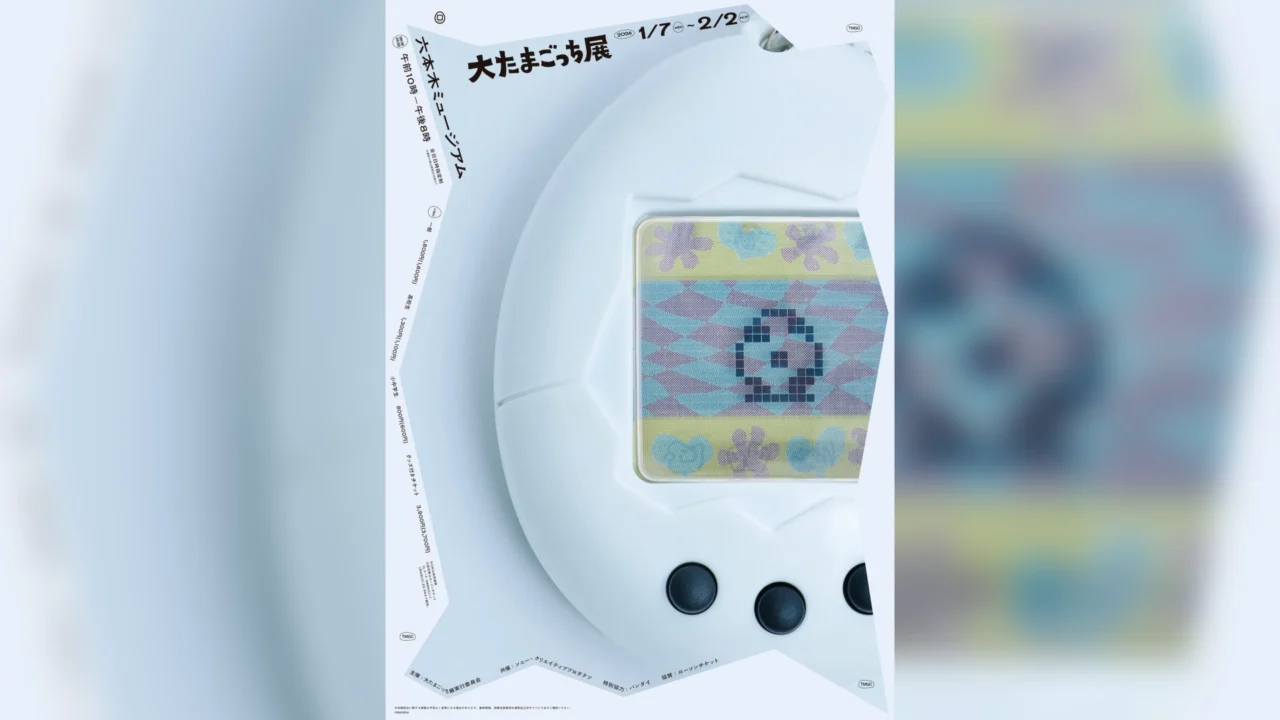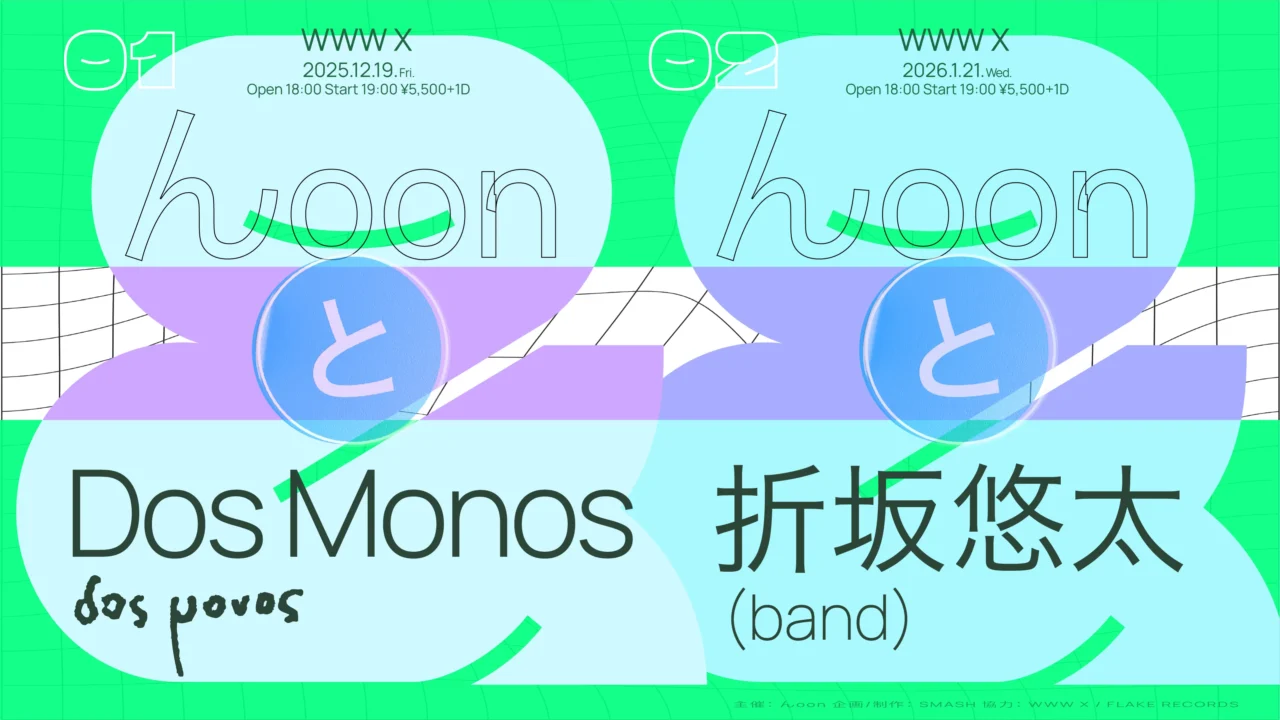A circle of friends connected by gootouchi! The “FIST BUMP” corner of the radio program “GRAND MARQUEE” features people who live and enjoy Tokyo in a relay format.
On December 28, anthropologist Fumito Takekura will appear on the program, introduced by Mayo Ichihara, a researcher at the Oishii Mirai Kenkyujo. This time, we asked him not only about his anthropological research and his book “Dogu wo Yomu” but also about how to trace the cognition of ancient people.
INDEX
Anthropologist Unraveling the Cognition of Ancients
Celeina (MC): This is my first time meeting an anthropologist, so I was wondering what kind of things anthropologists research?
Takekura: The anthropologists’s research field is quite broad. There are anthropologists who dig up human remains from tens of thousands of years ago in Africa, and there are anthropologists who analyze DNA. In my case, it is quite indoor anthropology.
It is called Intellectual History, but I am most interested in the history of cognition, not objects. For example, I study how Homo sapiens viewed this world tens of thousands of years ago, or their sense of time and space, using myths and figures from caves as clues to explain the mysteries.
Takano (MC): That’s great. So you are researching how ancient people thought and acted, since they had no TV or Internet, and their clothing and food were different from ours?
Takekura : Last year, I went to cave sites along the Danube River in Germany and Austria for fieldwork. From those caves, I found quite a few figures and musical instruments that are called the oldest works of human art. From the remains of the early Late Paleolithic period, roughly 40,000 years ago, I found a flute made from the bones of a vulture, for example.
Takano: There were musical instruments 40,000 years ago?
Takekura: Yes, there were. So far, this is considered to be the oldest musical instrument known to mankind. Also, a mysterious figure was found in the stratum about 35,000 years ago. It was made from the tusk of a mammoth, but we cannot tell what it represents because of its strange shape. Since such objects began to be found in the Late Paleolithic period, it may have been a time when there was a major change in human cognition.
Celeina:I see. Music, art, and art-related materials have been growing along with the history of humankind, and they are here today, aren’t they?
Takekura: At least 40,000 years ago.
Takano : I don’t know much about this very long time ago, but it is interesting.
Takekura : it is a dramatic thing, right?
Takano : Yes. I can’t help but think about it.
Celeina: It’s very romantic.
INDEX
“Right-brain study abroad” at an art college established his research style.
Takano: I have heard that your profile is very unique. Did you attend Musashino Art University?
Takekura: I originally attended Musashino Art University and dropped out. After that, I studied for the entrance exam again from the beginning and entered the University of Tokyo.
Takano:Musashino Art University and then the University of Tokyo!
Takekura:That was quite unusual and became a topic of conversation at the time. I studied at Musabi for two years, and in retrospect, it was an extremely valuable time in my life. Just as studying abroad is called “language study abroad,” I call these two years “right-brain study abroad.
Celeina:A wonderful name!
Takekura:I feel that the sensations and intuition I experienced during my two years of right-brain study abroad at Musashino Art University became the basis for my subsequent research style.
Takano:So you were able to gain the artistic conceptualization that only an art college can offer.
Takekura: I studied sketching at a preparatory school for art schools, which helped hone my ability to capture forms. I use this experience when analyzing figures from thousands of years ago, such as figures found in caves tens of thousands of years ago, or clay figurines(Dogu) found in Jomon period ruins in Japan.
Takano: You just mentioned the word “Dogu,” and when I think of Mr. Takekura, I still have an image of Dogu. Your book “Dogu wo Yomu” became a topic of conversation and won the Suntory Prize for Arts and Sciences and the Jun Miura Prize. In the interview with Jun Miura, you talked about the clay dolls being “yuru-chara” (loose characters).
Takekura : I am often asked, “You were always interested in Dogu, weren’t you?”. But I thought they were just strange clay dolls made by people in the past. But when I wanted to explore human cognition and ancient forms of cognition through myths and artifacts, clay figures gave me a great hint. That is how I came across clay figures as figurines.
When I was doing research, I thought that I would have to become the people of that time, look at the same scenery, and trace their awareness of why they made these things and how they felt, or else I wouldn’t be able to understand anything. I also did fieldwork where I went into the forests and the sea with my assistant and ate nuts, shellfish, and other fallen things that the Jomon people used to eat. If it was a forest or the sea, the scenery would not be that different from what they saw, so we incorporated this kind of thing as a research method for the purpose of overlapping the lines of movement.
Takano: Interesting. We have to look at it as if we were the Jomon people.
Takekura:This is another result of the right-brain study abroad program.
INDEX
Is the motivation to make Dogus a fundamental desire?
Takano:This is where your experience comes in handy. In “Dogu wo Yomu”, you hypothesized that clay figurines might be based on plants and shells.
Takekura : This has been overlooked for a long time now, but my decipherment results show that a great many of them were made in the shape of the food they ate. In particular, carbohydrate-rich plants are the main motifs. If the brain is the engine, glucose is the gasoline. This glucose is made from starch, which is produced by plants through photosynthesis. This is carbohydrate. Carbohydrates, which are gasoline, are essential for brain performance.
In addition, the satiety center also monitors blood sugar levels, so eating carbohydrates fills you up. Even if you go out to eat yakiniku and only eat meat, you will eventually want something like ochazuke. Even though meat may seem like enough, in the end you will still want rice, ramen, or other carbohydrates. I think this mechanism is a tendency that was created during the course of human evolution.
Takano:Do you think that making a Dogu of something you desire is like leaving behind a form of something you like?
Takekura:I don’t think people would go to the trouble of making clay figurines unless they had a considerable incentive to do so. So the plants and shells that were used as motifs would have a certain value. To put it plainly, appetite is the motivation.
Celeina:In the modern age, I think we have figurines of things we like. Do the Jomon people feel the same way as we modern people do?
Takekura:Yes. I don’t think they would bother to make something cumbersome unless they had a very strong underlying desire to do so. My analysis is that the reason why the figurines that ancient people made at such a high cost were related to obtaining food is because it was directly linked to maintaining life.
Celeina: Very interesting.
Takano: How did the Jomon people live with Dogus?
Takekura: I think some people had clay figurines and some did not, but it was still cultivation. What has recently come to light through further research is a scenario in which they used them as a spell or incantation to wish for the seeds they sowed to germinate and grow quickly when they cultivated their own plants. It is similar to the way people today make teru teru bozu when they want the weather to be sunny.
Celeina:Is it also like a good luck charm?
Takekura: I think it was probably converted into a good-luck charm as well.
Takano:So it’s a way of saying, “May you grow up well.
INDEX
When I walk in the city, I change my cognitive gear and enter the world of mythology.
Takekura:This is exactly the world of Ghibli. Hayao Miyazaki expresses such things beautifully, and in the same way, various spirits appear in mythology. I want to trace that feeling myself, and I usually access the world of mythology when I walk around Tokyo. How I do it is like a kind of cognitive gear, and when I change it, I see the world differently.
Celeina:Can this be implemented in ours?
Takekura:Yes. The simplest way to do this is, let’s say you are walking down the street and the sun is out. Here, word choice is very important because it is directly related to cognition. If you say, “It’s the sun,” that’s it.
Takano: The end?
Takekura: If you say “the sun” there, it is the end of the usual cognition. But instead of saying the sun, if you say, “Oh, it’s a fireball! A giant fireball is floating in the air right now,” it suddenly becomes more science fiction-like.
Takano: Indeed!
Celeina: That’s exciting.
Takekura: This is an amazing thing. In most mythologies, the sun appears as the sun god. In other words, he is alive. Saying “the sun” is boring because it’s an abstraction. The truth is, you have to wake up every morning and be amazed that the fireball is moving. There is a huge fireball floating in the air, and I wonder why everyone is going through it without a care in the world.
Celeina: I see.
Takano: If you say so.
Takekura: Wind also ends when you say “the wind blows”. If you are walking down the street, it suddenly brushes your hair and cheeks, so you are passing the spirit of the wind on the street. If you think of it that way, suddenly you are in a mythical world.
Celeina:It is romantic.
Takekura: Don’t you think this can be done?
Takano : It can be done.
Takekura : Even rain, it is strange that water falls from the sky. I think of it as if there is someone in the sky.
Celeina:I guess you could say that.
Takekura : We have become too accustomed to it. I think it is strange why they look so unconcerned when water is falling from the sky.
Takano: That’s interesting.
Celeina:If I use Takekura’s method, every day becomes furiously exciting.
Takekura: Every day will become a wonderland, so please start practicing today.
Takano: I will start on my way home.
Celeina: It’s exciting and makes me smile, doesn’t it?
Takekura: You can do it in every situation.
Celeina:I would like to play one song at such an exciting time. We asked Mr.Takekura to select a song that we would all like to listen to together at 4:00 in the evening. Please tell us the reason for the song selection.
Takekura:4:00 in the evening is a time that is neither daytime nor nighttime. It has an air of ennui, so I chose songs with a view of the world that I like.
Celeina : Please introduce the song.
Takekura : “Ctrl Z (feat. Foi)” by Sala.
INDEX
Over 1000 books piled up. The books I can’t read are for myself in the next life.
Celeina: We’ve been asking our listeners the question, “How many books are you stacking?”. How many books are you stacking, Mr. Takekura?
Takekura:This is a very timely question. I’m cleaning up my house right now, and I just counted them, and there are 1,200 books.
Celeina:1200 books?
Takano: That’s a different order of magnitude.
Celeina: Are the 1,200 books in your home?
Takekura: I have books in my office and home, and I am selling more and more of them now. There are still several thousand books there, so I don’t know how many books I have in total, but the stack that I think I need to read for now is about 1,200 books.
The criteria for putting them up for sale is whether or not I can read them in the rest of my life, before I die. I don’t think I will be able to read them all in this lifetime, so I have a few hundred books to sell. If I prioritize reading this one, then this one, and so on, no matter how I calculate it, I will not have enough time in the rest of my life. If I can’t read something in this life, I will carry it over to the next life (haha).
Celeina:So you are choosing based on the ultimate question, “Can I read this or not in the rest of my life?
Takekura: It was physically impossible, and I was conscious of my own mortality.
Takano:What were the criteria for the books you decided to leave behind?
Takekura:The most important was whether or not I would use them in my work, and if they were valuable as reference materials. I also intend to keep valuable books from abroad and books that seem to be unavailable as reference materials.
Takano:Are you planning to use them in your next writing?
Takekura: Yes, that’s right.
Celeina:Do you read novels and other books that you don’t use for your work in your spare time?
Takekura:I used to read a lot, but nowadays I don’t have time anymore, so I read those things in my next life (haha).
Celeina:It’s interesting. “FIST BUMP”, today we welcome anthropologist Fumito Takekura. Thank you very much.

GRAND MARQUEE

J-WAVE (81.3FM) Mon-Thu 16:00 – 18:50
Navigator: Shinya Takano, Celeina Ann






















